Key Takeaways
Hello Heart Hero. Hearing a term like "cardiac electrophysiology" for the first time can feel a bit intimidating, but you've come to the right place for clear answers. Let's break it down simply: think of it as the study of your heart's electrical wiring. This guide is here to turn that confusing medical jargon into concepts that actually make sense.
Your Guide to Understanding Your Heart's Rhythm
We get it. Navigating health information can be a maze, especially when you feel like you're not being heard or you're just looking for answers you can trust. But cardiac electrophysiology, despite its complex name, is built on a really straightforward idea. It’s a special area of cardiology that focuses completely on your heart’s electrical system and the rhythms it creates.
Here's an analogy: just like an electrician finds and fixes issues in a house's wiring, a cardiac electrophysiologist is a heart doctor who specializes in diagnosing and treating problems with your heart's rhythm. Their entire job is to make sure the "sparks" that make your heart beat are firing correctly.
This field is all about answering critical questions about how your heart is performing.
- Why is my heart beating too fast, too slow, or just plain irregularly?
- What's causing my symptoms, like palpitations, dizziness, or even fainting?
- How can we find the exact source of an electrical "short circuit" in my heart?
By zooming in on these electrical signals, doctors can get right to the root cause of many common heart conditions.
The Evolution of Heart Rhythm Care
The ability to map and treat the heart’s electrical system didn't just appear overnight. The field of cardiac electrophysiology is built on decades of breakthroughs. A huge leap forward came in 1969 with the first recording of the His bundle electrogram, which gave doctors their first real glimpse into a crucial part of the heart's conduction system.
This discovery built on earlier work that showed arrhythmias could be managed with electrical stimulation, which truly changed the game for many conditions. This constant push for progress has led to much better treatments for common issues like Atrial Fibrillation (AFib), where the focus now is on early rhythm control to head off long-term complications. You can learn more about the evolution of electrophysiology and its milestones from the American College of Cardiology.
How Your Heart's Electrical Symphony Works
Think of your heart as a finely tuned orchestra, with each beat part of a perfectly timed symphony. The rhythm it creates is what pumps life-giving blood throughout your body. Cardiac electrophysiology is simply the study of this electrical symphony, making sure every part plays its note exactly when it's supposed to.
At the center of it all is a natural "conductor" called the sinoatrial (SA) node. Tucked away in the heart's upper right chamber, the SA node generates a tiny electrical spark that kicks off every single heartbeat. It's your body's own pacemaker, firing off signals around 60 to 100 times per minute when you're resting.
But that initial spark doesn't stay put. It zips through specialized "wiring" to spread across the heart's upper chambers (the atria). This electrical message tells the atria to contract, pushing blood down into the lower chambers (the ventricles).
Following the Electrical Signal
From there, the signal hits a crucial checkpoint: the atrioventricular (AV) node. Acting like a gatekeeper, the AV node pauses the signal for just a split second. This brief delay is critical because it gives the ventricles enough time to fill up with blood before they get the signal to pump.
After that quick pause, the signal continues its journey down more pathways, finally telling the powerful ventricles to contract. This final, coordinated squeeze is what sends oxygen-rich blood shooting out to the rest of your body, completing one full heartbeat. This whole sequence happens in perfect harmony, over and over again.
This precise, step-by-step electrical journey is what makes your heart an incredibly efficient pump. When every part of this pathway works correctly, the result is a steady, strong pulse that keeps your body running smoothly.
The idea of tracking these electrical signals isn't new; its roots go back over a century. The invention of the electrocardiogram (ECG) by Willem Einthoven in 1902 was a game-changer. For the first time, doctors could actually see this electrical activity, assigning the familiar P, Q, R, S, and T letters to each part of the heartbeat. You can read more about these fascinating historical cardiology milestones and their impact.
This concept map helps visualize the core pillars of what cardiac electrophysiology is all about.
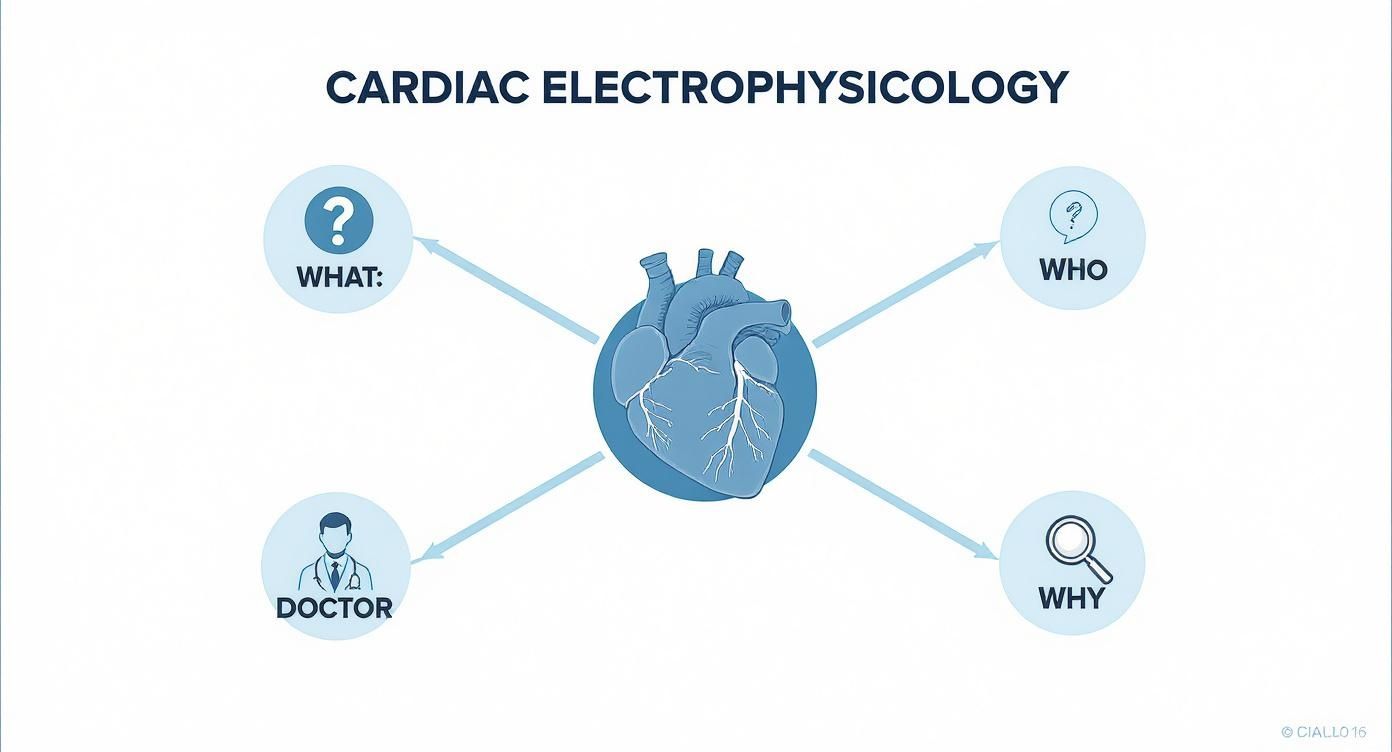
As you can see, the field is all about figuring out the "what, who, and why" behind your heart's wiring. A great way to see this symphony in action is by learning to interpret the output of an ECG. To get a better handle on what all those squiggly lines really mean, check out our guide on how to read an ECG.
When the Rhythm Goes Offbeat: Common Arrhythmias
Sometimes, the heart's carefully conducted symphony can miss a beat or play out of tune. When this happens, it creates an irregular rhythm known as an arrhythmia. It’s a word that can sound serious, but please know these conditions are often very common and treatable.
Understanding what might be happening can be a powerful first step in reducing worry. An arrhythmia is simply a disruption in the normal electrical sequence we've talked about. It could mean the heart is beating too fast, too slow, or just in a disorganized, chaotic way.
Many people experience arrhythmias without even knowing it. For others, the feeling is hard to miss, a flutter, a skip, or a racing sensation. These sensations are your body’s way of signaling that something in the electrical pathway is a little off. To learn more about what these feelings can mean, you can explore our detailed guide on common heart arrhythmia symptoms.
Exploring Common Types of Arrhythmias
While there are many kinds of arrhythmias, a few are particularly common. Each one has a unique electrical fingerprint and its own set of symptoms, which can range from barely there to more noticeable.
Here are a few you may have heard of:
- Atrial Fibrillation (AFib): This is the most common type of arrhythmia. Instead of the heart's upper chambers (the atria) beating strongly, they quiver chaotically. This can cause a rapid and irregular heartbeat, often described as a fluttering or "fish flopping" sensation in the chest.
- Bradycardia: This is when the heart beats too slowly, typically fewer than 60 beats per minute at rest. The electrical signal from the SA node might be firing too slowly or getting blocked on its way through the heart. This can leave you feeling tired, dizzy, or lightheaded because your body isn't getting enough oxygen-rich blood.
- Tachycardia: The opposite of bradycardia, this is a heart rate that's too fast, usually over 100 beats per minute at rest. There are different types, but they all involve extra or rapid electrical signals that speed up the heart's rhythm, which can cause a pounding or racing feeling.
It’s important to remember that experiencing symptoms like these is not an immediate cause for panic.
Your body is complex, and many factors can influence your heart's rhythm. The goal of cardiac electrophysiology is to pinpoint the exact electrical reason behind these feelings, providing clear answers and effective solutions.
The study of these conditions is crucial on a global scale. For instance, Atrial Fibrillation affects over 59 million people worldwide, and for some, the lifetime risk of developing it can be as high as 37%. Understanding and managing AFib is a major focus in healthcare, as early rhythm control has been shown to significantly reduce cardiovascular events and improve outcomes for patients. Discover more insights about the global impact of AFib from Europace.
Investigating Your Heartbeat with an EP Study
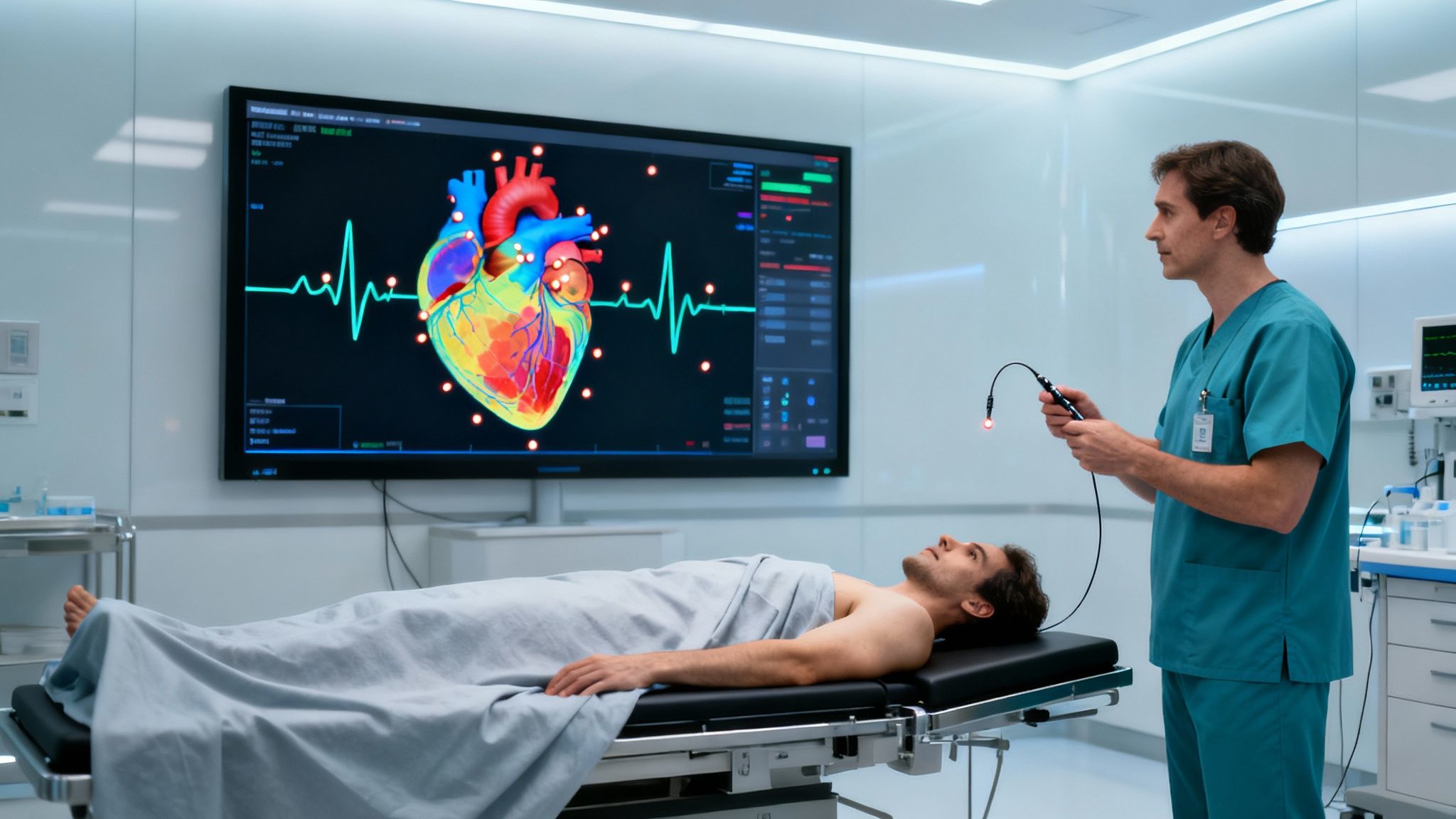
If your doctor suspects an arrhythmia is behind your symptoms, the next step is to get a closer look at what's really going on inside. This often means a procedure called an electrophysiology (EP) study. The name might sound intimidating, but the idea behind it is actually pretty straightforward.
Think of it as an electrician mapping out the wiring in a house. An EP study creates a detailed electrical map of your heart to find the precise spot where the faulty "wiring" is causing that irregular rhythm. It lets specialists watch your heart's electrical system in action, all within a safe and completely controlled setting.
This isn't just guesswork; it's a diagnostic deep dive. By getting this map, your medical team can go from simply suspecting a problem to knowing exactly where it's coming from. And that’s the most important step toward finding the right treatment for you.
What Happens During an EP Study?
The idea of any heart procedure can be a little unnerving, so let's walk through what actually happens. The whole process is designed to keep you comfortable while giving your doctor a wealth of information.
First, you'll get some medication to help you relax. You’ll feel drowsy, but you won't be fully asleep. A specialist will then carefully guide one or more very thin, flexible wires, known as catheters, through a blood vessel (usually in your groin) and up into your heart. These catheters have tiny electrodes on their tips that can sense and record electrical activity directly from inside your heart.
Once they're in place, the team can do a few key things:
- Record Electrical Signals: They can "listen in" on the electrical conversation happening between your heart's chambers.
- Pace the Heart: They might send tiny, painless electrical signals to see how your heart muscle reacts.
- Induce Arrhythmias: In this safe environment, they can sometimes trigger the exact arrhythmia you've been feeling to see exactly where it starts.
Pinpointing the arrhythmia's origin during an EP study is like finding the one faulty wire in a complex circuit. This precision allows for highly targeted and effective treatments, often during the same procedure.
As you learn about the nature of an EP study, it's reassuring to know that patient safety is the top priority. Critical processes like medical device sterilization validation are standard practice to ensure every piece of equipment is sterile, protecting you throughout the procedure.
Capturing Elusive Symptoms
But what if your symptoms are shy and don't show up on command during a test? Many arrhythmias are notorious for coming and going, which makes them tough to catch during a brief visit to the doctor's office. This is where at-home monitoring is a total game-changer.
Devices like a Holter monitor, or even more conveniently, a portable electrocardiogram monitor, let you record your heart's rhythm the moment you feel a symptom, no matter where you are. This gives your doctor the real-world data needed to piece together the full story of your heart's behavior over time.
Learning more about how a portable electrocardiogram monitor can empower you to capture these important moments is a great next step. This information can beautifully complement an EP study, helping your team make the most informed diagnosis possible.
Modern Treatments for Restoring Your Heart's Rhythm
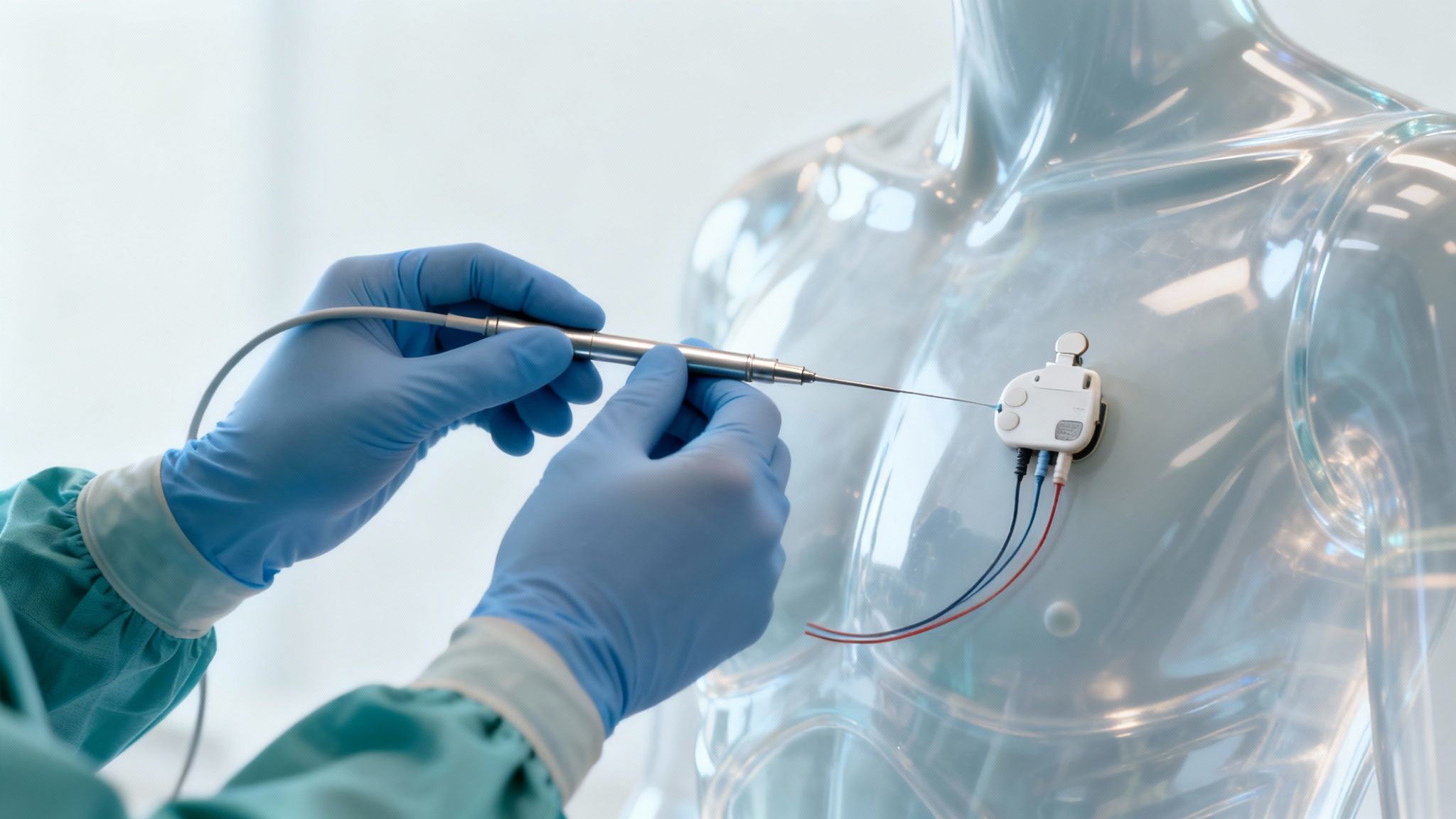
Finally getting a diagnosis can be a strange mix of relief and worry. But the good news is, once your doctor understands what's causing an arrhythmia, there are some incredible tools available to get your heart's rhythm back in sync and help you feel like yourself again.
For many people, the journey starts with medication. Certain drugs are great at controlling your heart rate or preventing arrhythmias altogether. It's often the simplest and most effective first step toward managing symptoms and stabilizing your heart.
Advanced Procedures and Devices
When medication doesn’t quite do the trick, cardiac electrophysiology offers more direct solutions. One of the most common is catheter ablation. You can think of it as a super-precise "rewiring" of your heart.
A specialist guides thin, flexible tubes (catheters) to the tiny spot in your heart that’s causing the haywire electrical signals. They then deliver a bit of energy to that spot, essentially fixing the short circuit. Success rates for catheter ablation are often very high, with many people finding their arrhythmia is completely gone.
Another powerful approach involves implantable devices that act as your heart's personal guardian, working 24/7 to keep its rhythm steady.
- Pacemakers: These small devices are the go-to for bradycardia (a heartbeat that's too slow). A pacemaker keeps an eye on your heart's rhythm and, only when needed, sends a tiny, painless electrical signal to prompt a beat. This ensures your heart rate doesn't drop too low. We cover the whole process in our guide on the heart pacemaker operation.
- Implantable Cardioverter Defibrillators (ICDs): An ICD is a lifesaver for people at risk of dangerously fast, chaotic heart rhythms. While it can also function as a pacemaker, its main job is to detect a life-threatening arrhythmia and deliver a quick electrical shock to reset your heart to a normal rhythm.
These treatments are about more than just managing a condition; they're about getting your life back. They’re designed to free you from symptoms and give you the peace of mind to live confidently.
It helps to see these solutions as powerful allies on your health journey. They're the result of decades of innovation aimed at a single, simple goal: letting your heart beat the way it's supposed to, so you can get back to focusing on the things you love.
Taking an Active Role in Monitoring Your Heart
It’s an all-too-common story. You feel a flutter in your chest or a dizzy spell, but by the time you can get to a doctor, the feeling is gone. This frustrating cycle of experiencing a symptom and then having nothing to show for it can make you feel powerless over your own health.
Navigating the time between appointments can feel like a waiting game, especially when your symptoms are so unpredictable. Many heart rhythm issues come and go, making them incredibly difficult for a doctor to catch during a brief, scheduled visit. This is where you can step in.
By becoming a proactive partner in your own care, you help bridge the gap between appointments and give your medical team the missing pieces of the puzzle. It’s a shift from being a passive patient to an active participant who gathers the exact information needed for a diagnosis.
Capturing Symptoms the Moment They Happen
Modern technology has put incredibly powerful tools right into our hands. At-home ECG monitors, from smartwatches to dedicated devices, let you record your heart’s electrical activity the very instant you feel something isn't right. Think of it as having a heart specialist on your wrist, ready to document what’s happening in real time.
This isn’t just about collecting data, it’s about capturing hard evidence. An ECG recording of a symptom as it's happening provides priceless insight that a doctor might otherwise never get to see.
Capturing your heart's rhythm during a symptomatic event is one of the most powerful steps you can take toward a faster, more accurate diagnosis. It transforms a vague description of "feeling funny" into concrete, actionable medical data that your doctor can analyze.
This real-world information helps your doctor build a much more complete picture of your heart's behavior over days and weeks, not just during a 15-minute office visit.
Turning Uncertainty into Action
Taking control of your heart monitoring does more than just help your doctor, it can dramatically reduce the anxiety that comes with unexplained symptoms. Instead of worrying about whether a symptom will return or if anyone will believe you, you have a direct way to document it.
This proactive approach has several huge benefits:
- Empowerment: You’re no longer just waiting for answers; you are actively helping to find them.
- Clarity: Giving your doctor specific ECG recordings from episodes helps them pinpoint the type of arrhythmia much more quickly.
- Efficiency: This data can speed up the whole diagnostic process, leading to the right treatment plan sooner.
By taking an active role, you transform moments of uncertainty into opportunities for understanding. You become a crucial part of your own care team, working right alongside your doctor to get your heart’s rhythm, and your peace of mind, back on track.
Frequently Asked Questions About Cardiac Electrophysiology
Diving into something as important as your heart health naturally brings up a lot of questions. It's completely normal, and we've gathered a few common ones to give you clear, straightforward answers. The goal here is to help you feel more comfortable and informed about cardiac electrophysiology.
Is an Electrophysiology Study Painful?
Most people describe the feeling as pressure where the catheter is inserted, but the study itself isn't considered painful. You'll be given medication to help you stay relaxed and comfortable the entire time. Your medical team is right there with you, making sure you're at ease from start to finish.
How Long Does Recovery From a Catheter Ablation Take?
The recovery is usually pretty quick. Many people head home the same day or just stay overnight for observation. It's common to feel a bit tired or notice some bruising for a few days, and your doctor will probably advise you to avoid any heavy lifting for about a week.
Does Every Arrhythmia Require a Pacemaker?
Absolutely not. It’s a common misconception. Pacemakers are generally for heart rates that are too slow, a condition called bradycardia. If your arrhythmia involves a fast heart rate, treatments like medication or a catheter ablation are often the first line of defense. Your doctor will always recommend the best path forward based on your specific diagnosis.
Heart feels off? Get your ECGs read by certified experts within minutes, for peace of mind ❤️
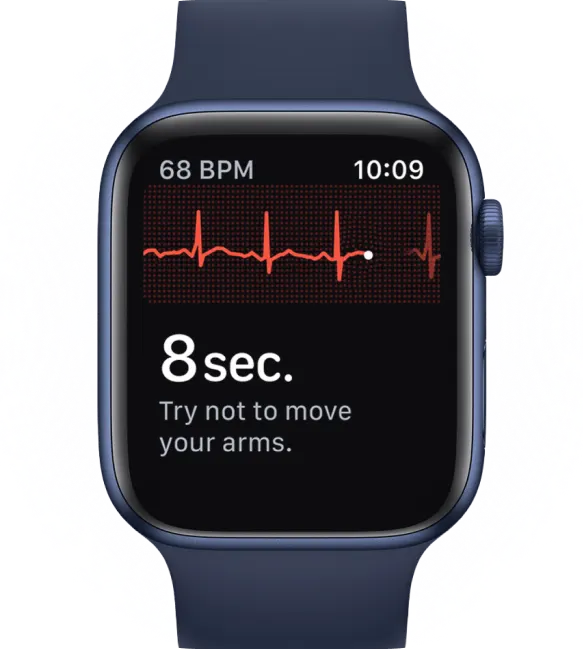


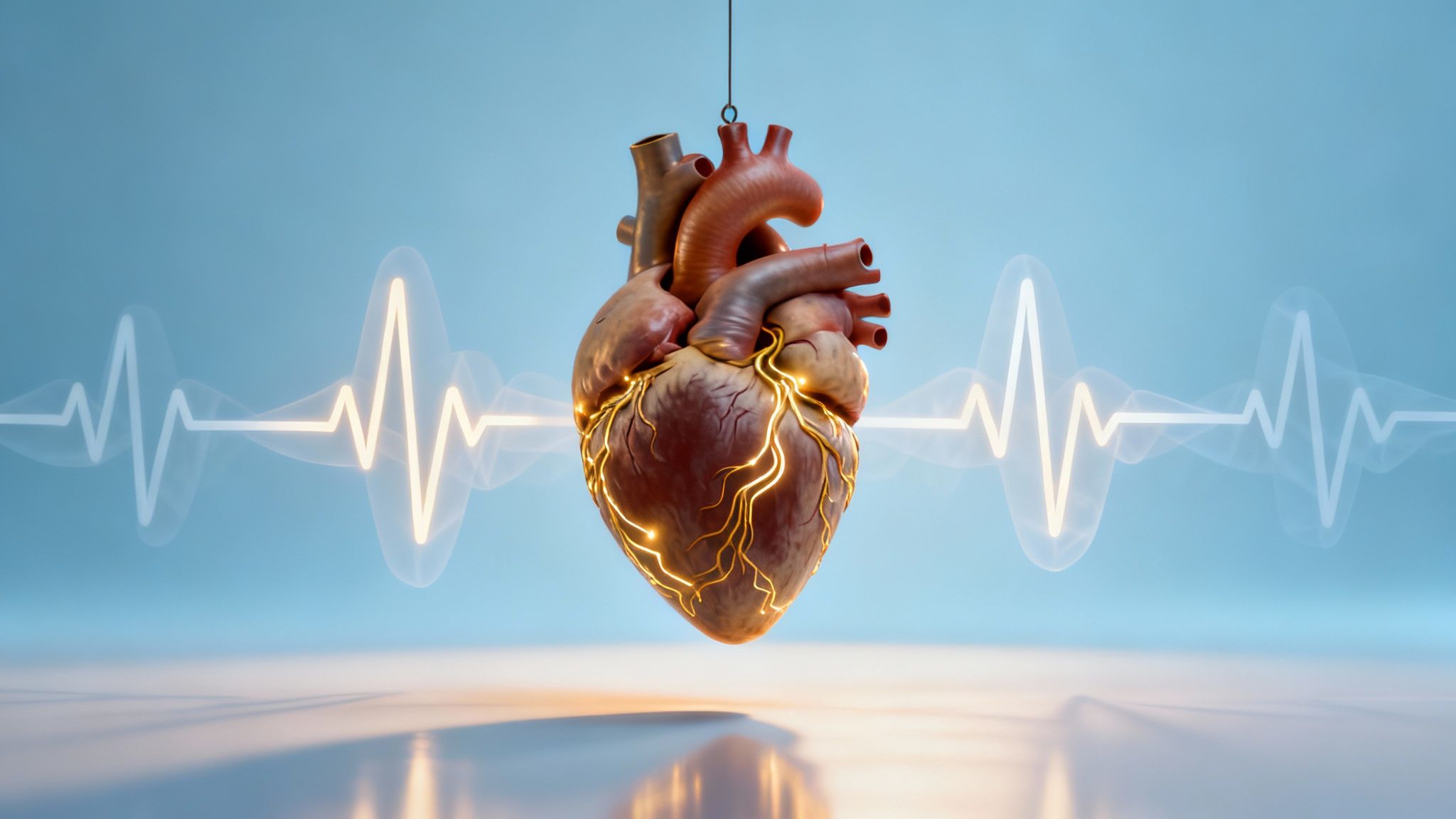






.png)
.png)